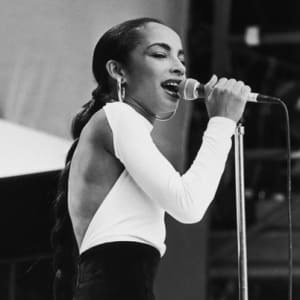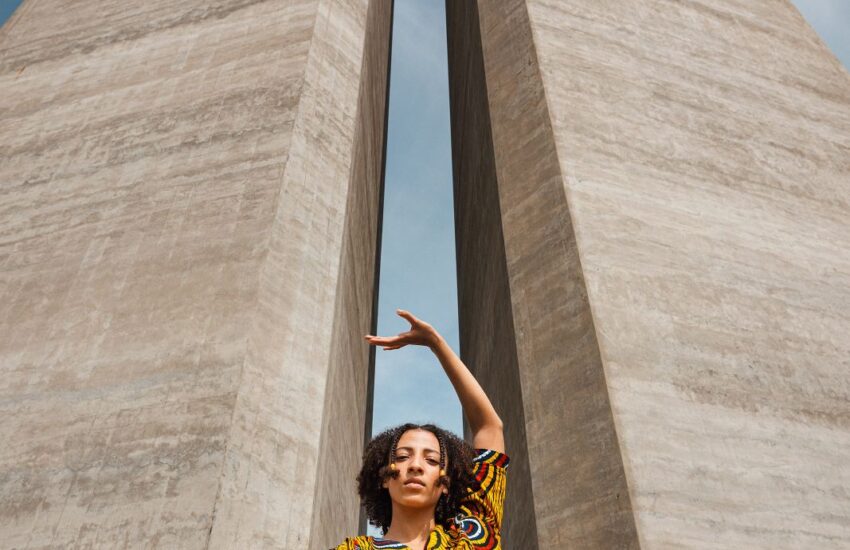Sade @ 60: Reflections on an Afropean Icon
Written by Tola Ositelu
I have been told more than once that I have a freakishly good long term memory. It is thus a bitter irony that, despite the numerous mental titbits I have retained from infancy, my one brief encounter with Helen Folasade Adu – or Sade as she is better known – has disappeared from the recesses of my brain.
As my mother tells it, we were waiting in Lagos airport for our plane back to the UK. Sade was also returning to Blighty from one of her frequent trips to Nigeria. It was the early/mid-‘80s. Sade and her band had just started taking the world by quiet storm with their unique brand of soulful pop on a smoothed-out jazz tip. Diamond Life, their debut, eventually scooped a Best Newcomer Grammy. Sade herself was one of the few recording artists to ever grace the cover of Time magazine.
Even as a tot, I would have been well aware of whom she was. According to mum, Ms Adu was so unassuming even the personnel didn’t hassle her (anyone who’s passed through Murtala Muhammad would understand this isn’t common), instead giving her a speedy VIP boarding pass. She graciously signed some autographs before entering the plane.
As this quintessentially Afropean icon turns 60 this month, I pause once more to consider Sade’s enduring cultural and personal impact.

First there’s the matter of shared patrimony. Both of us carry Yoruba monikers (Folasade roughly translates as ‘The crown bestows wealth’). I’ll forever be grateful she did not retreat to the safety of the Anglo-Saxon ‘Helen’, in the process introducing an indigenous West African name – even if often mispronounced – to the mainstream.
I dare say that it would be nigh impossible for anyone of Nigerian origin growing up in the ‘80s and ‘90s to be unaware of Sade. She always just was. Born on 16 January 1959 in Ibadan, to an English mother and Nigerian father, she is very probably one of Naija’s most celebrated exports.
I have distinct memories of my mum singing Love Is Stronger than Pride when Sade released the (almost) eponymous album. I recall studying the midnight-blue artwork of the family copy of Promise on vinyl, as well as the iconic shots of her performing at Live Aid ‘85; hair gelled and signature long plait hanging to the middle of her back.
I equally remember reading a rare and intimate interview with Sade in a Sunday supplement on the release of the Love Deluxe record circa 1992. I would admire the mocha-gorgeous album artwork of mum’s cassette copy. I acquired a decent knowledge of Sade’s back catalogue but true fandom was (re)kindled in my early 20s. Back in the day, what was then Jazz FM, used to keep the love alive by playing Sade tunes. As an undergraduate living in halls, I watched the MOBO ceremony with excitement when the band made one of their legendary comebacks after yet another ludicrously long (eight-year) sabbatical. I was ticked off at the audience for speaking over the performance, not to mention the general lukewarm reception in the UK to the band’s return with Lovers Rockin 2000.
Ms Adu’s alluring beauty and statuesque physique, combined with her effortless sophistication, makes her the stuff of myth. Sade’s contemporaries speak of her simple elegance. Her distinguishing features – slender neck, wide-set feline eyes, thick eyebrows, broad forehead and full lips- need little adornment. Adu herself once described her image as ‘stark’. She didn’t romance the camera in her promos. You’d be more likely to find her staring into the middle distance, as if she has far weightier matters on her mind. Her aloof singing expression, muted dance moves, reluctance to display her dazzling smile and general slickness make her all the more intriguing. She is famously guarded about her private life, allegedly claiming that all you need to know can be learned through her heart-on-sleeve lyrics. Nothing sparks curiosity like the enigmatic.
After the success of second album Promise, Sade fled to Spain to avoid the glare of the Paparazzi. Like fellow reclusive legend Kate Bush, she seemed to eschew the fame that was an inevitable by-product of her success. This is a far cry from many of the female celebrities who have come in her wake; with their kiss-and-tell stories and insistence on flashing body parts that would make a gynaecologist blush. Sade did do her share of risqué videos – Feel No Pain and Kiss Of Life come to mind – but there was nothing truly sleazy about them. In regards to sex appeal, she embodies the less-is-more ethos; subtle tantalisation which leaves something to the imagination. I am grateful to have grown up in a time when talented and beautiful women were the epitome of class; not chasing fame for its own sake and only receiving media coverage when they released new material.
Sade brings this same classiness to her music. According to an apocryphal anecdote, when she joined forces with band-mates Stuart Matthewman, Andrew Hale and Paul Denman, the former model and fashion student only saw herself as a stand-in vocalist until they found a ‘proper’ singer. Thankfully she was never replaced. The group even jettisoned their original appellation, Pride, adopting instead the middle-name of their lead vocalist. She appears alone on the album covers. The band and its distinctive front woman have always been interchangeable.
Sade’s touring schedule has a similarly Halley’s Comet-like cycle as the albums; a once in a lifetime experience. This only contributes to her mythical status. Back in spring 2011, I had the privilege of attending the London leg of the Soldier of Love tour at the 02 Arena. It was the first time Sade had played their hometown for nearly 20 years. The audience transcended almost every conceivable social demographic. It remains one of my most cherished (pardon the pun) musical memories.
As the huge gaps between albums suggest (almost 10 years and counting since Soldier of Love), Sade aren’t about putting out material just to keep the record company happy or stop the fans wandering off. They’ve released only six albums in a career that spans 35 years; the last three at the rate of one a decade. Sade needn’t worry about being abandoned by their fans. Their back-catalogue is timeless, belonging to its own soulful sub-genre. How else to explain the lasting interest worldwide in their output during the long, silent years between albums?
In 2018, the band released two singles from soundtracks for Ava Duvernay’s A Wrinkle in Time and Steve McQueen’s Widows. Never mind that neither of these folky-soul offerings are representative of Sade at their creative height.Just the rumour of new material set the internet ablaze, with famous fans rendering beautifully-worded homage. Everyone from Maxwell and Jessie Ware to Mayer Hawthorne and Drake cites Sade as a perennial influence. She’s even been a muse for Smooth Jazz heavyweight Kenny G.If the group never release another record, their place in pop-soul history is nonetheless secured.
The secret to their success is perhaps as elusive as the lady herself. I will however attempt to pinpoint some of this ineffable appeal.
Firstly, Sade’s music has an ambience of its own. At their best, the band craft addictive melodies around substantive lyrics. And then there is Sade’s idiosyncratic elongated phrasing, the doleful way she resolves her notes. Let’s not forget the trademark all-male BV vocal arrangements – honey-voiced tenor Leroy Osborne being a staple – that sets her sound apart (Cherish The Day and Nothing Can Come Between Us are two great examples of this male/female vocal interplay).
Moreover, Sade possesses an unmistakable vocal quality. Her smoky contralto – with its masculine texture – is unlike any other. I can’t think of anyone who sounds quite like Ms Adu. She doesn’t do much in the way of leaping across octaves or show-boating ornamentation. There’s definitely no affecting a transatlantic accent, sticking rather to her natural estuarial tone with a hint of West African cadence. Much like everything else about her, there’s beauty in simplicity and restraint.
The ‘80s and ‘90s mark Sade’s creative apogee in my estimation: Diamond Life, Stronger than Pride and Love Deluxe being their superior albums.
These earlier releases showcase Adu at her lyrical best. Award-winning debut Diamond Life is probably the least impressive vocal performance of Sade’s career – she was clearly still finding her voice – yet the song-writing on this seminal album is superlative from start to finish.
Sade has too often been accused by her (almost invariably male) detractors of being dull and depressing. Either they are not paying close attention or Ms Adu’s vulnerability and candour leaves them slightly uncomfortable. True, Sade has an inclination towards the melancholy but she’s far more versatile than her critics claim. Her pen(wo)manship wouldn’t be nearly as impressive if she were merely a balladeer.
Any artist should consider it a blessing to produce anything as era-defining as Smooth Operator,which caught the mood of yuppie fever at the time. Capturing this particular zeitgeist proved a mixed blessing, given the band’s miners-supporting politics were undeniably left of the young -Thatcherite label with which they became associated.
As a master-storyteller, Sade’s penchant for minimalism comes into play once again. Her songs pithily tackle heavy topics such as socio-economic meltdown (Feel No Pain is sadly as salient now as it was during the early-‘90s recession), confessions of a war criminal (Like A Tattoo), ruthless ambition fuelled by poverty (Jezebel), existential angst over the human condition (King of Sorrow)and so on. If there is one recurring theme it’s that of loyalty and friendship (By Your Side, I Will Be Your Friend, Cherish the Day, Turn My Back On You, The Safest Place…).
Atmospheric classic Sweetest Taboo from sophomore Promise, has been sampled or covered ad infinitum in the decades since its release.
Sade isn’t afraid to avoid safe pop song-writing structures (chorus-verse-chorus, verse-chorus-verse); sometimes doing away with a refrain altogether, to which By Your Side and Clean Heart attest. Their arrangements leave space for – shock, horror – extended instrumentation, perhaps a nod to their jazzy inclinations.
Song meanings aren’t always easy to decipher, at times as abstract lyrically as they are accessible melodically. Diamond Life’s Sally– a sultry epic about the woes of urban isolation – could be referring to the Salvation Army or a woman who gives bodily comfort to lonely, disillusioned punters.
As Ms Adu approaches her 60th, I’d like to once again show my appreciation for the music, cultural pride and that hard-to-articulate sentiment she inspires.
In honour of her birthday, I’ve created the following playlist of Sade favourites. (NB: It’s based on personal preference; not a Best of…/Greatest Hits.)
Happy Birthday Sade. Afropeans everywhere salute you.
This is an updated version of a tribute piece that featured on Soulculture.co.uk in 2010, and this article also appears on I Was Just Thinking



Sade is the most successful UK Artist with African origins but I always used to wonder why there was minimal African components , sounds or influences. She\’s a very unique vocalist but the music was considered to dull & safe when you view everything else what was happening in context especially in the 80\’s.
I\’d like to share a link to a remix project I completed iIlustrating that Sade is the coolest Artist ive ever heard & can perform on any genre.